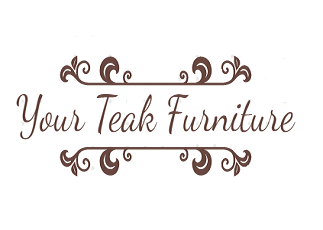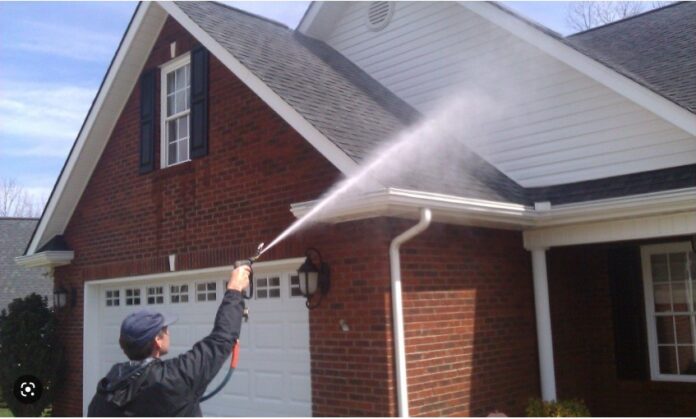Pressure washing your home can be a great way to clean it quickly and safely. However, there are some things you need to keep in mind when pressure washing your home. This article will discuss how to pressure wash your home safely and effectively.
What is pressure washing?
Pressure washing is a process of using clean water to clean surfaces by forcing the water through the surface at high pressure. The high pressure breaks down dirt, grease, and other contaminants so that they can be washed away with the water.
There are a few things you should keep in mind when pressure washing your home:
- Use caution when working around ladders or scaffolds – These can be dangerous if used improperly.
- Always wear protective gear, including gloves, eye protection, and a face mask.
- Be sure to read and follow all safety precautions before starting the job.
- Make sure to empty the hose of all water after each use to avoid flooding your house or damaging fixtures.
How does pressure washing work?
Pressure washing is a simple and effective way to clean your home. You use water pressure to force the dirt, dust, and debris off of your surface. This process can be done by yourself or with the help of a professional pressure washing service provider like fivestarpw.com.
To pressure wash your home safely and effectively:
1) Choose the right type of equipment. There are two main types of pressure washers-industrial and domestic. Domestic washers are usually smaller and designed for smaller homes or apartments, while industrial washers are larger and more powerful. Make sure you choose the right type of pressure washer for the job at hand.
2) Prepare the surface. Before you start washing, make sure all debris is cleared from the surface you will be using as your cleaning area. This includes any furniture or objects that might get in the way of the water stream.
3) Get ready to start! Turn on your pressure washer according to manufacturer’s instructions, then wait for it to reach operating temperature (this can take a few minutes). Next, find a spot on your surface where you will be working (a grassy area around a pool is perfect), adjust your sprayer so that it is aimed directly at the ground (or whatever you will be cleaning), and turn up the flow until it reaches full pressure (15-20 psi).
4)Start washing! Begin spraying the surface opposite of where you adjusted your sprayer nozzle, moving across the entire surface in a horizontal direction. The pressure from the water will help wash the dirt, dust, and debris off of the surface.
5) Rinse off your cleaning area. Once you have finished cleaning the surface, turn off your pressure washer and wait for it to stop flowing before rinsing off your cleaning area.
Types of pressure washers
There are several types of pressure washers, each with its own benefits and drawbacks. This guide will teach you about the different types, so you can choose the one that best suits your needs.
Pump-type pressure washers: These machines use a pump to generate high pressure water, which is then directed through the spray gun. They’re easy to operate and typically have a large water tank capacity. However, they can be more expensive than other types of pressure washers, and their spray output may not be as powerful.
Piston-type pressure washers: These machines use pistons to create high pressure water shots. They’re less expensive than pump-type machines and typically have a smaller water tank capacity, but their spray output may be weaker.
Vacuum cleaner attachments: Some pressure washers come with attachments that allow you to use your vacuum cleaner to remove dirt and debris from surfaces. While this method is less powerful than using a regular pressure washer, it’s often faster and easier to use.
Safety tips for pressure washing
When it comes to pressure washing your home, safety is always a top priority. Here are some tips to keep you and your family safe while you clean:
Always use the correct detergent: Just because a product is labeled as a “pressure washer” detergent doesn’t mean it’s effective on all surfaces. Always read the label and choose the right detergent for the task at hand. For example, an interior-type detergent won’t be effective on exterior surfaces like decks or siding.
Ensure the water temperature is consistent: Keep the water temperature consistent when pressure washing your home. Too hot of a water temperature can damage paint, trim and other surface materials; too cold of a water temperature can cause frostbite or hypothermia.
Use enough water: Make sure to use enough water when pressure washing your home – spray bursts are common during large areas being cleaned, so using more than necessary isn’t going to waste any water. You also want to make sure that the flow of water is covering all surfaces being washed – if not, add more until coverage is achieved.
Allow time for cleaning: When cleaning large areas such as decks or driveways, allow time for the cleaner to work its magic – typically an hour per surface area will do the job just fine. If you have small areas you need cleaned quickly, try using a power jetting tool instead of a full-blown pressure washer.
Use common sense: Finally, always use common sense when pressure washing your home – keep children and pets away from the area being cleaned, avoid spraying water into the windows, and be aware of potential hazards around the house that could be affected by the cleaning process.
How to pressure wash your home safely
If you’re like most homeowners, you probably pressure wash your home at least a few times a year. But while the benefits of a clean home are obvious, there is also risk involved when pressure washing your home – so it’s important to know how to do it safely. Here are five tips for pressure washing your home safely:
- Use the right tools: When pressure washing your home, make sure to use the appropriate tools and equipment. You don’t need a $5,000 machine to get the job done – in fact, using a cheap power washer can actually cause more damage than good. Instead, invest in a quality power washer that’s specifically designed for cleaning homes.
- Protect your property: Before starting the pressure wash, make sure to protect all of your property – including windows and roofs – with plastic sheeting or tarps. Not only will this help keep water and debris from damaging your property, but it’ll also help avoid potential insurance claims if something does happen during the wash.
- Create a safe work area: When you’re preparing to start the pressure wash, create an area on your property that’s free from obstacles and hazards (like power lines or trees). This way, you won’t have to stop the wash prematurely because of something unexpected happening nearby.
- Keep a watchful eye: While you’re Pressure washing your home be mindful of traffic and weather conditions outside – if there’s a storm impending, for example, it might be best to wait until the weather clears before starting the wash. And of course, always wear protective gear, like a helmet and gloves, when working around water.
- Clean up properly: Once you’ve finished pressure washing your home, make sure to clean up all the debris and water – don’t leave anything behind that could potentially cause damage or harm. Use a garden hose to rinse off the entire property, then use a hose to clean any surfaces that were exposed to water (like porches or decks). Finally, use a bucket and brush to sweep any dirt and debris off of sidewalks and driveways.
Cleaning tips for your home after pressure washing
After pressure washing your home, there are a few tips that you should follow to ensure the cleanliness of your property and the safety of you and your family.
- Always wear protective gear when pressure washing: A good rule of thumb is to always wear a face mask, gloves, and long sleeves when pressure washing your home. This will protect you from potential chemicals that may be in the water and also keep you warm during colder weather.
- Keep an eye on the pH level: One important thing to remember when pressure washing your home is to keep an eye on the pH level. If it dips below 7-8, then it is time to call a professional. This is due to the high levels of chlorine that can be used in pressure washing. A low pH level can leave your home vulnerable to damage from mold and mildew growth.
- Make sure all debris is removed: One of the most important things to do after pressure washing your home is to make sure all debris is removed! This includes anything from leaves, branches, dirt, rocks, etc. Failure to remove all debris can lead to problems down the line such as water stains, outgrowth, and more serious accidents such as slips and falls.
- Use an appropriate detergent: When selecting a detergent for use with a pressure washer, it is important to select one with a high soap content (at least 30%). This will help break down grease and dirt while leaving your home clean.
- Wait until the water is clear: Once the pressure washing is complete, wait until the water is clear before entering your home. This will ensure that no dirt or debris has settled on the surface and can be easily wiped away.

